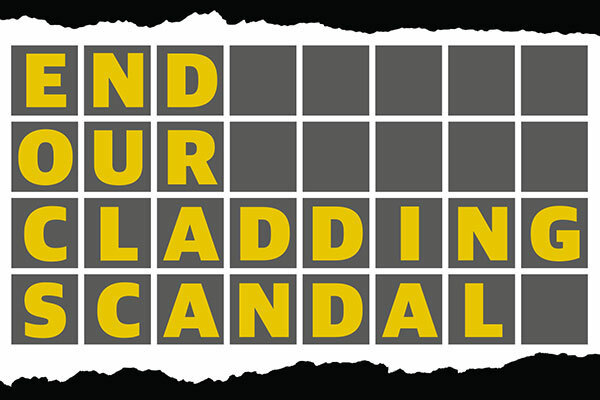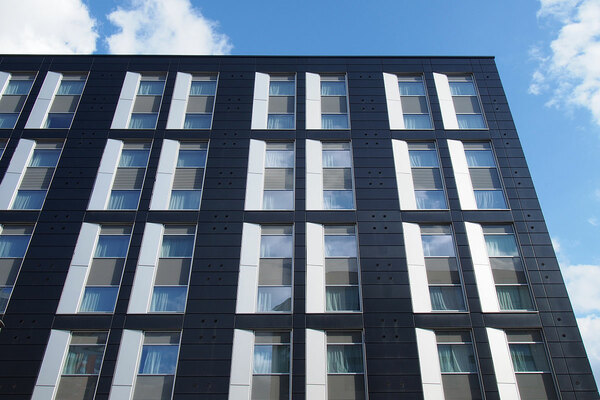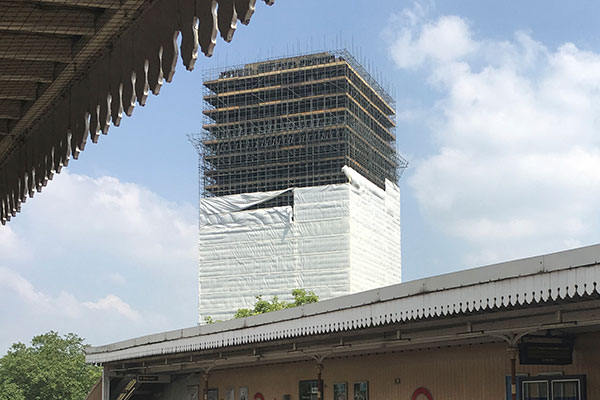Government establishes ‘protection board’ to assure safety of towers with Grenfell-style cladding
The government has established a ‘protection board’ to ensure buildings clad with Grenfell-style materials are safe while they wait for remediation work.
The board, which is chaired by the National Fire Chiefs Council, has taken responsibility for the safety of all 318 buildings around the UK that still have dangerous aluminium composite material (ACM) cladding installed.
It had previously been piloted for 10 buildings before expanding to all 318 and will expand to all ‘high-risk’ residential buildings around the UK “if necessary” by 2021.
The board – which has representatives from the Home Office; the Ministry of Housing, Communities and Local Government; and the Local Government Association – has the power to “provide expert, tailored building checks and inspections” to the affected towers.
It will ask “assurance questions” to ensure that risks have been mitigated and that a tactical plan has been put in place for the building in case there is a fire.
The remit could be expanded to cover data-gathering and lower-rise buildings with ACM, it is understood. It is also likely to have a role in prioritising which buildings are most at risk.
While this board is a step towards that aim, the campaign also calls for resident involvement in the work and coverage of all buildings – not just those above 18m with ACM.
The campaign also calls for a building safety fund to help remediate buildings and ensure that leaseholders are not burdened with cost.
It comes as the government comes under increasing pressure over a perceived lack of action to make buildings safe in the aftermath of the Grenfell Tower fire.
In October, Barbara Lane, expert witness to the public inquiry, issued a damning assessment of the official response, which she said was based on an assumption that buildings with dangerous cladding were safe to occupy.
Residents of buildings with dangerous cladding also warned that their “lives were at risk” unless the next government took a more proactive stance over the remediation of tall buildings.
Inside Housing learned of the protection board plan via leaked minutes of a meeting between London boroughs and government officials that discussed the pilot.
The government has since confirmed that it has been expanded to cover all ACM towers above 18m tall.
End Our Cladding Scandal: campaign asks
The next government must:
- Create a ‘building safety fund’ to help pay for the necessary remediation work to affected buildings in the social and private sector – not just those with ACM cladding and above 18m
- Set up a taskforce, with the involvement of residents, capable of inspecting buildings, prioritising and ordering work and ensuring leaseholders are protected from unnecessary costs
End Our Cladding Scandal general election campaign: full coverage
The cladding scandal is far from over. Here’s why we need a fresh approach
Click here to read the full story
Ahead of the general election, Inside Housing revisits our national cladding scandal and sets out what needs to be done to prevent any further tragedies. Peter Apps reports.
The cladding crisis Down Under: what we can learn from the response to Grenfell in Australia
Click here to read the full story
Five years ago a fire spread up Grenfell-style ACM cladding on a high-rise in Melbourne. This prompted an overhaul of the Australian state of Victoria’s building safety regime. Peter Apps finds out what the UK could learn.
More than 100,000 buildings outside scope of fire safety measures, minutes reveal
Click here to read the full story
There are more than 100,000 medium-rise homes that fall outside new regulations aimed at making buildings safe in the aftermath of Grenfell, including the ban on combustible cladding, Inside Housing can reveal.
It’s only a matter of time until the next Bolton unless the parties step up to the plate on fire safety
Click here to read the full story
Inside Housing’s new election campaign calls on the main political parties to commit to taking action to prevent what currently seems like an inevitable further tragedy. It’s time for everyone to step up, writes Martin Hilditch.
Leaseholders fear missing out on £200m cladding fund as bidding deadline approaches
Click here to read the full story
Leaseholders living in blocks seeking government funding for the removal of Grenfell-style cladding have raised concerns over meeting the deadline for applications, while criticising the lengthy process being run by the government.
Government refusing to test polystyrene panels, despite request from London boroughs
Click here to read the full story
The government has no further plans to carry out testing of cladding products despite a specific request from London boroughs to test systems comprising polystyrene, a document obtained by Inside Housing has revealed.




